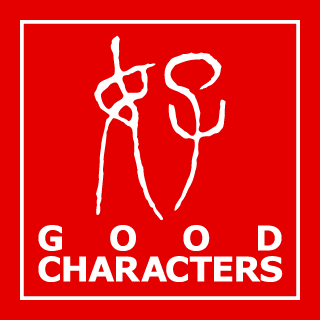
The Making of a Stamp
Step 1: We buy blank self-inking stamps made by Trodat in Austria that are imported into the US.
The Good Character Difference #1: Some buy other, more economical stamps. We like our proven and reliable products.
Step 2: We translate and/or transliterate your names into Chinese, Japanese, or Korean for the stamp.
You pay a one-time fee for our translation because we spend time researching, crafting, and selecting a good translation from among several options. It is well worth the time and money to ensure you have a good translated name. We are, first and foremost, the naming specialists and then the stamp crafters. We don’t make hand-carved seals on stones but we craft great names. You should have naming experts translate your name instead of having artisans, who are not naming experts, decide the translated version of your name. Google Translate is a quick and easy tool for getting the gist of ideas for a name, but it is usually not the best for name translation.
The Good Character Difference #2: We pay attention to the name. If the name translation is not good, everything else doesn’t matter.
Step 3: For Chinese, Japanese kanji, and Korean hanja, there are usually multiple ways your name can be transliterated or translated, so your unique attributes as an individual are considerations in deciding the best name.
Step 4: We may add one, two, or three characters that are traditionally used to reach the number of characters necessary to form symmetry for the stamp.
Step 5: For Chinese, Japanese kanji, and Korean hanja, we arrange the characters according to the traditional way: Vertically from top to bottom; from right to left.
Step 6: For certain numbers of characters that can be laid out in different ways, we assess visually and carefully choose the one that is the best artistically.
Step 7: We design the stamp and fine tune the size of the characters and the spacing between them to make sure everything forms a harmonious whole.
The Good Character Difference #3: We are a bit obsessive about the design. Everything needs to be proportionally correct and pleasing to the eyes.
Step 8: We generate a preview image and show it to you online.
Step 9: We produce a rubber die plate production file and send it to our laser engraving machine.
The Good Character Difference #4: We use high-detail lenses so we can reliably engrave as many as 36 seal characters in a .45” x .45” (11.4 mm x 11.4 mm) stamp. This makes forgery practically impossible.
Step 10: We clean up the rubber die plate by giving it a sonic bath and rinse it off using expensive bottled water — kidding, just the good old clean tap water after the sonic wash.
Step 11: We assemble the stamp and test it on paper to make sure it’s upright, not crooked, and all the characters show up crisp in clear detail.
Step 12: We mark the side of the stamp that should be facing you when you stamp with a red dot.
The Good Character Difference #5: We keep good records and offer a 10-year replacement program.
Certificate Stamps Page: https://shop.goodcharacters.com/collections/certificatestamps
